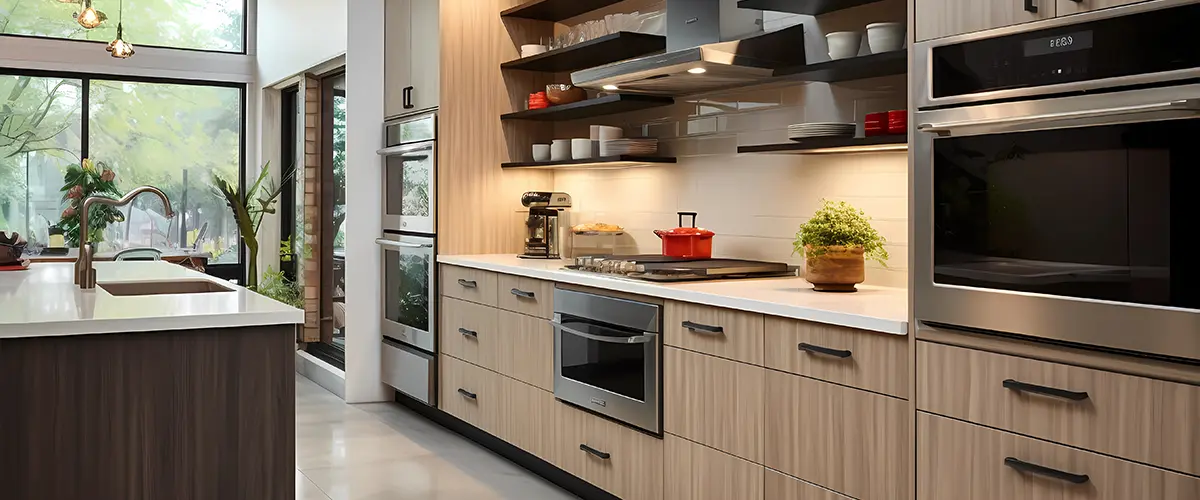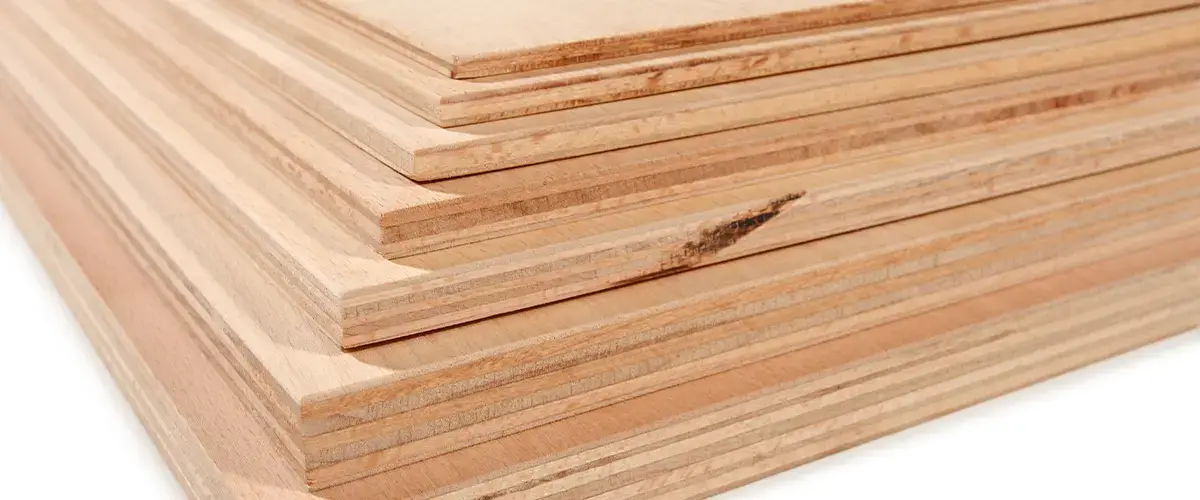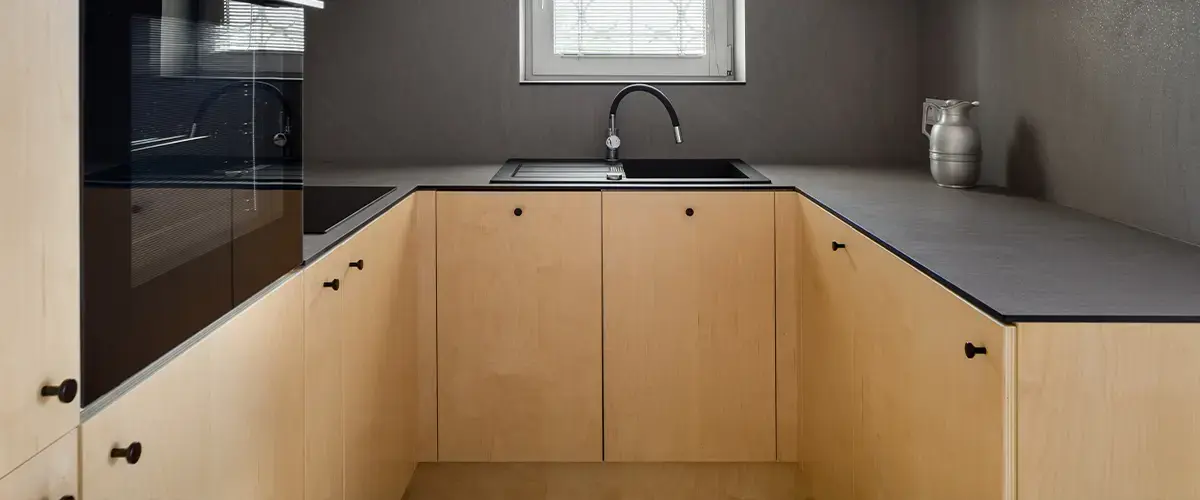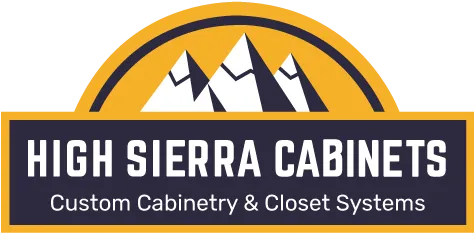Particle Board Vs Plywood: Which is Better for Cabinets?
In the world of cabinet construction, two contenders stand out: particle board and plywood. Each brings its unique strengths to the table, influencing not just the aesthetic appeal but the longevity and functionality of your cabinets.
This blog post is designed to navigate you through the nuanced differences between these materials, ensuring you’re equipped with the knowledge to make an informed choice that aligns with your vision and requirements.
Whether you’re a first-time homeowner or a seasoned renovator, understanding the impact of your choice on the quality, cost, and durability of your cabinets is pivotal. Especially when planning a full kitchen cabinet upgrade.
Stay tuned!

Understanding Cabinet Construction
Understanding cabinet construction involves considering the materials and methods used to create the different components, such as cabinet boxes, fronts, side panels, stiles, and rails.
These elements play a crucial role in determining the overall functionality and aesthetics of your cabinets.
Cabinet Boxes
Cabinet boxes form the backbone of kitchen and bathroom cabinets, providing structure and stability. Manufacturers often choose between particle board or plywood for this crucial component.
Particle board cabinet boxes are made from compressed wood fibers and resin, making them cost-effective but less durable than their counterparts.
On the other hand, plywood cabinet boxes consist of several layers of wood veneer glued together, offering greater strength and resistance to moisture.
Choosing the right material for your cabinet box construction can significantly impact the overall quality and longevity of your cabinetry. Plywood tends to hold screws more tightly and is less likely to warp or swell in humid conditions than particle board.
Despite these advantages, cabinets with plywood boxes typically come at a higher price point due to their superior durability and construction features. Considering these factors is vital in deciding on the best material for your needs.
Cabinet Fronts
Moving from the structure of cabinet boxes, we shift our focus to the cabinet fronts. These components are crucial for defining the style and functionality of your kitchen cabinets.
Cabinet doors serve as the face of your storage space, setting the tone for your kitchen’s aesthetic appeal. Manufacturers often select either particle board or plywood for these elements, influenced by factors like cost, durability, and appearance.
Choosing between particle board and plywood impacts not only how your cabinets look but also their longevity. Plywood cabinets are known for their strength and resistance to warping over time.
On the other hand, particle board offers a more cost-effective solution with a smooth surface that is easy to paint or laminate. Both materials can support various designs ranging from simple solid wood looks to intricate patterns suitable for furniture board applications.
The decision rests on weighing which attributes—be it price, durability, or aesthetic—are most critical for your project needs.
Side Panels, Stiles, and Rails
Side panels, stiles, and rails are essential parts of cabinet construction. Side panels form the main structure of a cabinet, holding everything together. They can be made from particle board or cabinet grade plywood.
Stiles and rails frame the front and sides, giving cabinets their shape and stability. These components provide support for the doors to attach securely.
Choosing between particle board and plywood for these elements depends on your needs. Particle board offers a cost-effective option with smooth surfaces perfect for laminates.
Plywood is known for its strength and resistance to warping, making it ideal for areas exposed to moisture.
Each material brings advantages to your cabinet’s durability and aesthetic appeal.

Particle Board vs Plywood Cabinets
- Differences in Strength and Durability
| Property | Particle Board | Plywood |
|---|---|---|
| Strength | Less strong due to its composition of wood chips and glue. | Stronger due to the layers of wood veneer pressed together. |
| Durability | Tends to sag or break under heavy weight over time. | More durable and can support heavier loads without sagging. |
| Longevity | May have a shorter lifespan due to susceptibility to damage. | Typically lasts longer with better resistance to wear and tear. |
| Impact Resistance | More prone to damage from impacts or dents. | Higher impact resistance, less likely to show damage. |
Each material offers distinct benefits and limitations in terms of strength and durability. Now, let’s move on to how they fare against water and moisture resistance.
- Water and Moisture Resistance
Particle board is vulnerable to water damage, swelling, and warping. It’s important to note that particle board cabinets can be ruined if exposed to moisture.
Plywood, on the other hand, is more resistant to water and moisture due to its construction with layers of wood veneer glued together at angles for added strength.
Plywood cabinets are better suited for areas with high humidity or where there’s a risk of exposure to water. This makes plywood a more reliable choice for kitchen and bathroom cabinets where spills and humidity are prevalent.
Maintaining the integrity of your cabinets against moisture-related damage is crucial in ensuring their longevity and durability.
- Price and Availability
Transitioning from the discussion of water and moisture resistance, let’s now focus on the aspects of price and availability for particle board and plywood when selecting materials for your cabinets.
Price and availability play significant roles in deciding between particle board and plywood for cabinet construction. Here’s a quick comparison:
| Aspect | Particle Board | Plywood |
|---|---|---|
| Price | Generally less expensive | More expensive than particle board |
| Availability | Widely available at most home improvement stores | Also readily available, but selections may vary |
Both materials have their unique advantages and disadvantages related to cost and how easily you can find them. Particle board often comes out as the more cost-effective option, making it appealing for budget-conscious projects.
On the other hand, plywood’s higher price tag is justified by its superior strength and durability, appealing to those prioritizing quality over cost. Both are readily available, but you might find more variety in plywood types and grades.

Making the Decision: Which is Better for Your Cabinets?
Deciding between particle board and plywood for your cabinets involves weighing factors like strength, durability, moisture resistance, and cost. To learn more about making the right choice for your cabinets, keep reading.
Factors to Consider
When making the decision between particle board and plywood for your cabinets, consider the following factors:
- Strength and Durability: Particle board is prone to damage from impacts and moisture, while plywood is stronger and more durable.
- Water and Moisture Resistance: Plywood has better resistance to water and moisture compared to particle board, making it a better choice for kitchens and bathrooms.
- Price and Availability: Particle board is generally more affordable and readily available than plywood.
- Intended Use: Consider the intended use of the cabinets – heavy-duty use may call for plywood, while lighter use may be suitable for particle board.
- Environmental Impact: Plywood is often considered more environmentally friendly due to its natural wood composition, but consider sourcing from sustainable suppliers regardless of material choice.
Pros and Cons
| Aspect | Particle Board | Plywood |
|---|---|---|
| Strength and Durability | Less strong and durable compared to plywood | More strong and durable, can support more weight |
| Water and Moisture Resistance | Less resistant to water, can swell or deteriorate over time | Better resistance to water and moisture |
| Price and Availability | Generally cheaper and widely available | More expensive but offers better long-term value |
| Environmentally Friendly | Made from compressed wood scraps, considered eco-friendly | Requires more wood to produce, less eco-friendly |
Navigating the Path to Your Ideal Cabinets
Choosing the right material for your cabinets is more than a matter of cost—it’s about aligning with your lifestyle, aesthetic, and the atmosphere you wish to create in your space.
This is where thoughtful cabinet design becomes essential.
Particleboard offers a budget-friendly solution with a smooth, customizable surface, making it a popular choice for those looking to balance cost and design.
Plywood, on the other hand, stands as the beacon of strength and resilience, promising longevity and superior resistance to moisture – a vital consideration for environments like kitchens and bathrooms.
The decision between particle board and plywood ultimately hinges on your specific needs, priorities, and the vision you have for your home.

FAQs
The main difference lies in their materials and construction; particle board is made from compressed wood particles, while plywood consists of layers of wood veneer glued together.
Plywood tends to be more durable and resistant to moisture compared to particle board, making it a better choice for kitchen cabinets.
While you can use particle board for bathroom cabinets, it’s less resistant to moisture than plywood. If the area gets wet often, plywood might be a safer choice.
Yes, generally speaking, cabinets made from particle board are less expensive than those made with plywood due to differences in material costs and durability.
Ready to Transform Your Space with the Perfect Cabinets?
High Sierra Cabinets is here to guide you through every step of your cabinet selection process.
Whether you’re drawn to the cost-effective versatility of particle board or the unmatched durability of plywood, our experts are ready to help you make a choice that you’ll be satisfied with for years to come.
Contact us today to explore your options and begin the journey toward realizing the vision of your ideal home. Let’s create something beautiful together. (775) 242-6832
